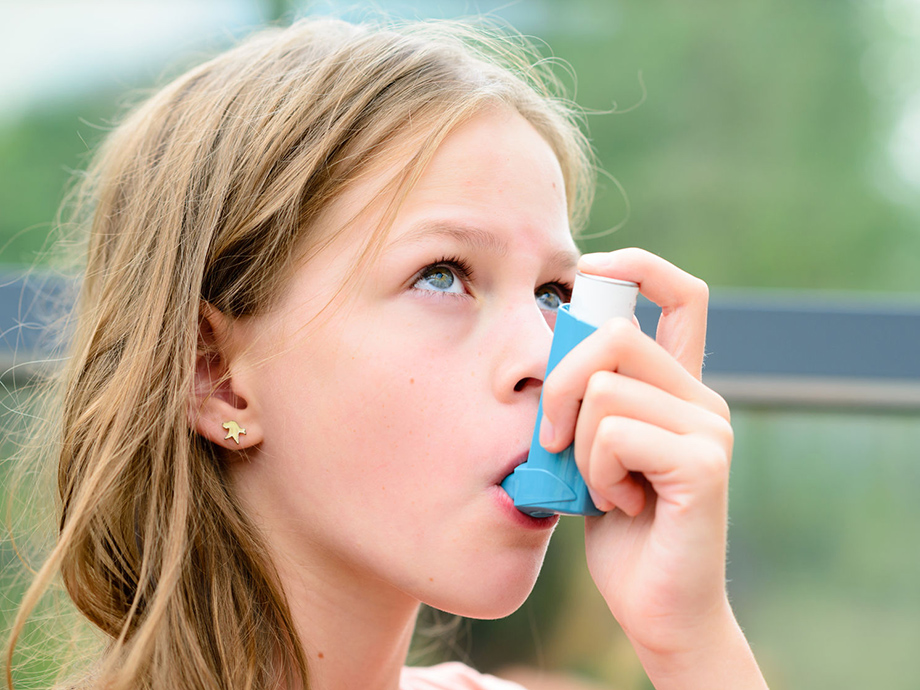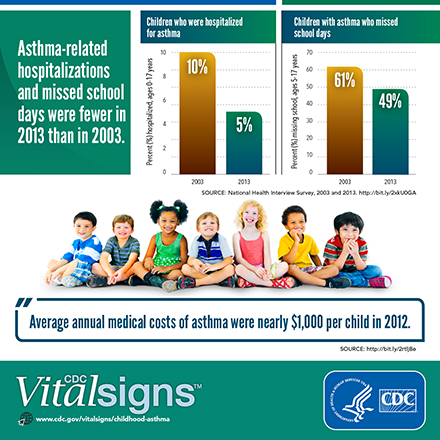Good News: Asthma Attacks Down Among U.S. Children
CDC Says Help Needed to Continue This Progress
February 13, 2018, 08:43 am News Staff — New data from the CDC show that from 2001 to 2016, children with asthma in the United States had fewer asthma attacks, missed school days and visits to the hospital.

According to a CDC Morbidity and Mortality Weekly Report (MMWR) and related Vital Signs report released Feb. 6, the percentage of children with asthma who experienced one or more asthma exacerbations in the preceding 12 months declined from about 62 percent in 2001 to about 54 percent in 2016.
However, about half of children with asthma still had one or more asthma attacks in 2016.
"We are making progress -- but health care providers, parents, caregivers and schools can do more to help children avoid asthma attacks," said CDC Acting Director Anne Schuchat, M.D., in a news release. "Asthma attacks can be terrifying for children and their families. Over the past decade, we've identified asthma management actions that work -- not alone, but in combination. Now we need to scale up these efforts nationwide."
Story Highlights
Asthma is the most common chronic lung disease of childhood, said the agency, affecting about 6 million children in the United States. And although there isn't a cure for asthma, its symptoms can be controlled by avoiding or reducing exposure to triggers such as allergens and irritants and by following recommended medical care.
Key Report Findings
The CDC analyzed annual core data (2001-16) and periodic supplemental asthma data (2003, 2008 and 2013) from the National Health Interview Survey for children ages 0-17 to identify trends and demographic differences in health outcomes and health care use.
Among the agency's key findings for that period were that some children were more likely than others to have asthma, including boys, children ages 5-17, non-Hispanic black children, children of Puerto Rican descent and children from low-income families.
In addition, whereas asthma prevalence was lower among children ages 0-4 years than among older children, the prevalence of asthma attacks, emergency department or urgent care center visits, and hospitalizations was higher among children ages 0-4 years than among those ages 12-17.
The study also found that
- the percentage of asthma-related hospitalizations among children with asthma declined from 9.6 percent in 2003 to 4.7 percent in 2013;
- the percentage of children with asthma who reported asthma-related missed school days dropped from 61.4 percent in 2003 to 49 percent in 2003; and
- more children with asthma received an asthma action plan, were taught how to recognize the signs and symptoms of an asthma attack, and were instructed how to respond quickly in 2013 than in 2003.
Although this is all good news, the CDC noted that one in six children with asthma will still make an asthma-related trip to the emergency department each year, and 5 percent will be hospitalized.
How Family Physicians Can Help
The CDC said recent evidence from projects it has funded to study asthma treatment have shown a combination of actions family physicians can take to be highly effective in managing children's asthma.
First, the agency said family physicians should work with children and parents to determine the severity of a child's asthma, develop an action plan for the child and share that plan with the family, school staff and other caregivers.

Next, the CDC said physicians can teach children and parents how to manage asthma by using control and rescue medications properly, as well as how to avoid asthma triggers such as tobacco smoke, mold, pet dander and outdoor air pollution.
Finally, the group recommended that physicians collaborate with community health workers, pharmacists and others in their area to best serve the needs of children with asthma.
CDC Asthma Efforts, Resources
The CDC launched the National Asthma Control Program in 1999 with the mission of reducing the number of deaths, hospitalizations, emergency department visits, school days and workdays missed, and limitations on activity due to asthma.
The program currently funds partners in 24 states and one territory to ensure that people with asthma have ready access to guidelines-based medical management and pharmacotherapy for their disease and to address the intersection of public health and health care by funding asthma-related state and national initiatives, promoting asthma quality measures, and educating policymakers about the burden of asthma.
The CDC also has included asthma control as one of the six focus areas in its 6/18 Initiative: Accelerating Evidence Into Action, in which the agency is partnering with health care purchasers, payers and providers to improve health and control health care costs by targeting six common and costly health conditions.
More From AAFP
American Family Physician: AFP By Topic: Asthma